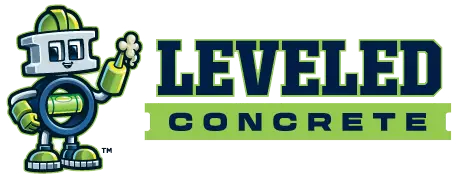After mowing some things last Saturday, you notice a crack in your driveway. It was something new, so you investigated further only to find nothing under the concrete—there is a void. No wonder the concrete cracked! How did that happen and what can you do about it?
What causes voids?
When you discover voids or hollows under a concrete slab, the cause is erosion. When the concrete was poured, it was poured on gravel or soil; the void has developed since the slab was poured. Voids happen when rainwater slowly washes the base sediment from under the slab.
Puddles along the edges can soften and move soil. But the major cause for erosion is water that travels through the concrete. While concrete appears to be very solid, it has many gaps and pores, and rainwater easily moves from the surface to the soil underneath. Water will find a way to move and will carry soil along with it. Over a period of time, a small void will become a large void unless addressed.
Once a large void develops, trouble is inevitable. The weight of the concrete has nothing but thin air to rest on. The weight of vehicles, whether moving or stationary, will eventually cause the concrete to weaken and crack.
Must I replace my cracked concrete?
Discovering cracks early gives you options besides replacement. After you understand that cracks develop because of voids, you know that any solution you choose must deal with both cracks and voids. Technological advances give you the chance to solve both problems at once.
Leveled has 6 years of experience using Polylevel, a high-density polyurethane foam, to both fill voids and level cracked concrete. Without removing the concrete or repouring, Leveled can fill the voids and repair cracked and sunken concrete. It happens like this:
- A technician will inspect the concrete surfaces, the surrounding soil, and probe cracks as needed to determine the extent of void development.
- Our application team will work with your schedule to find an optimal time to make repairs.
- On application day, the team will drill holes about the diameter of a pencil through the concrete. The holes are drilled strategically, based on the information ascertained during the inspection.
- Polyurethane foam is injected through the holes and expands very quickly into every void, completely filling the void. Once the foam is cured, it is waterproof and very inert. It does not erode, rot or crush. It has no nutritional value, so it does not interest pests, rodents or microbes. Once in place, it will support the weight of concrete and vehicles to prevent further cracking.
Because of the density of Polylevel, our technicians can not only fill voids, but repair cracked and sunken concrete.
- Our experienced installation technicians will inject the required amount of foam to lift the cracked or sunken portion of the slab.
- The dense foam will not only support the concrete but move it back into its original position.
The key to a successful repair project is catching the problem early. Small cracks and voids are much easier to repair than complicated multiple crack slab problems.
Commercial Concrete Leveling
When you are ready to fix that uneven concrete, call us at 832-995-2000 to schedule your free inspection for concrete repair. Leveled can schedule a free inspection to help walk you through your options.
